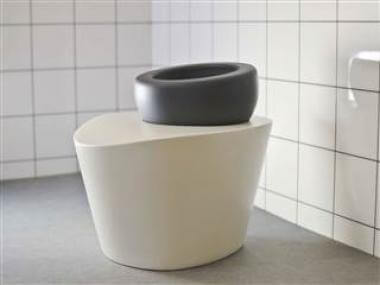How Do Kegel Exercises Work?
In this episode, you’ll learn about Kegel exercises: their definition, prescribed uses, and overall effectiveness.

As private and potentially embarrassing a topic this may be, I’ll just go ahead and admit it: I’ve been doing lots of Kegel exercises lately. First defined in 1948 by a gynecologist named Arnold Kegel, Kegel exercises consist of repeatedly contracting and relaxing the muscles that form your pelvic floor, sometimes with the use of special weights and devices to increase resistances. Typically, Kegel exercises are done to help get rid of urinary incontinence, to reduce premature ejaculation, and to increase the size and intensity of erections. I’ll let your mind go wild about why I have personally chosen to try a 30-day stint of daily Kegel exercises, and I’m working on a separate article about that, but suffice it to say, Kegels have been something on my mind lately.
How Kegels Work
As I alluded to, the basic purpose of Kegel exercises is to increase the muscle tone, strength, and endurance of your pelvic floor muscles, specifically by strengthening the muscles of your pelvic floor called the “pubococcygeus” muscles (yep, that’s a mouthful!).
The most popular prescribed use of Kegel exercises is to help pregnant women prepare their pelvic floor for the rigors of pregnancy and childbirth, but Kegels can also be used for vaginal and uterine prolapse (in which parts of your anatomy literally “fall out” of you!), treating prostate pain in men, treating urinary incontinence in men and women, and helping with premature ejaculation and sexual performance.
The best way to describe Kegels is as follows: you simply contract the same muscles you’d normally contract if you were trying to slow or stop a flow of urine. Often when you “squeeze” these muscles in a contraction, you’ll feel your glute muscles contract as well, and sometimes even your lower abs.
Perhaps a little less well known is the fact that barbells, weights, springs, or cones designed to be held in a woman’s anatomy, and special weights designed to attach to a man’s anatomy can increase the difficulty and effectiveness of Kegel exercises for a more advanced and difficult workout.
Are Kegel Exercises Effective?
So … do Kegel exercises actually work? While I’m keeping the results of my N=1 experimentation to myself until I’m done with my 30 days of Kegel training, I have a friend named Katy Bowman, who isn’t too enchanted with Kegels. Here’s what Katy has to say about Kegels:
“A Kegel attempts to strengthen the pelvic floor, but it really only continues to pull the sacrum inward, promoting even more weakness and more pelvic floor gripping. The muscles that balance out the anterior pull on the sacrum are the glutes. A lack of glutes (having no butt) is what makes this group so much more susceptible to pelvic floor disorder. Zero lumbar curvature (missing the little curve at the small of the back) is the most telling sign that the pelvic floor is beginning to weaken. An easier way to say this is: Weak glutes + Too many Kegels = Pelvic Floor Disorder.”
Katy also thinks that regular use of Kegel exercises could potentially make your pelvic floor muscles too tense, at least relative to the tenseness or strength in your butt muscles. Her recommendation is to instead work on building your glute muscles (your butt) and to focus on mobility moves that allow you to eventually be able to get into a deep squatting position. While I think this is probably sound advice for women planning on pregnancy and childbirth, the fact is that if you combine Kegels with glute exercises, such as weighted squats, and lunges with mobility exercises, such as deep body weight squats, you’ll probably avoid any issues with excessive pelvic floor tightening.
In other words, if you’re only relying on Kegels alone for pelvic floor strength, you might run into some imbalance and tightness issues. But if you’re including other exercises for your core and lower body, you’ll probably be just fine. In addition, decades of scientific research support pelvic muscle exercises for boosting sexual performance, preventing the onset of erectile dysfunction, reducing premature ejaculation, and helping with urinary and prostate health.
How To Do Kegels
Let’s finish with a sample Kegel workout:
Step 1: Find the right muscles. As you learned earlier, to identify your pelvic floor muscles, stop urination in midstream or tighten the muscles that keep you from passing gas. These are your pelvic floor muscles.
Step 2: Once you’ve identified your pelvic floor muscles, lie on your back with your knees bent and apart. Tighten your pelvic floor muscles, hold the contraction for three seconds, and then relax for three seconds. Try it a few times in a row but don’t overdo it. As your muscles get stronger, you can do Kegel exercises while sitting, standing, or walking.
Step 3: Repeat. There’s no hard and fast rule for Kegels, but I’ve personally been doing ten 1-2 second contractions, followed by 20 rapid contractions, followed by a 20 second hold, followed by one minute of rest, for a total of 3 rounds.
If you have more questions about how Kegel exercises work, then leave your thoughts over at the Facebook.com/GetFitGuy page!
Image courtesy of Shutterstock.






